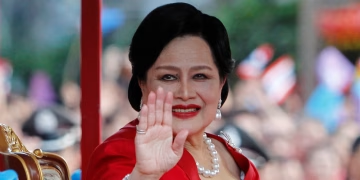From October 22 to 31, 2025, the Kingdom of Bahrain is proudly hosting the third edition of the Asian Youth Games (AYG), centered in its vibrant capital, Manama. According to the Olympic Council of Asia (OCA), more than 4,000 young athletes from 45 Asian National Olympic Committees are taking part. The event features 26 sports and over 230 events, making it the largest edition in AYG history.
This milestone marks Bahrain’s first time hosting the Games, reflecting its growing ambition to become a regional sporting hub and a center for youth development across Asia.
A Colorful Opening Ceremony
The opening ceremony, held on October 22 at Exhibition World Bahrain in Sakhir, was a spectacle of youth, energy, and cultural pride. Shaikh Nasser Bin Hamad Al Khalifa, representing the King of Bahrain and Chairman of the General Authority for Sports, officially declared the Games open.
In his speech, he highlighted that the AYG offers a “platform for the young generation of Asia to show their strength, compete fairly, and build friendships.” The atmosphere was electric—colorful flags waved, athletes smiled with excitement, and Bahrain showcased its readiness to welcome Asia’s best young talent.
What Makes This Edition Special
This year’s Games stand out for several reasons.
First, it is the largest AYG ever, surpassing previous editions such as Nanjing 2013, which hosted around 2,400 athletes. Bahrain has invested heavily in infrastructure, upgrading major venues such as Isa Sports City and Khalifa Sports Complex.
Moreover, this is the first AYG to feature AI-powered commentary, an innovation meant to enhance the spectator experience and bring real-time insights to fans. Additionally, Muaythai makes its debut as a new competitive sport, reflecting the event’s commitment to evolving with modern athletic trends.
Who’s Competing
The competition welcomes athletes aged 14 to 18 years, representing the next generation of Asian sporting talent. With 45 participating nations, the diversity is striking—teams from East, West, Central, South, and Southeast Asia have all gathered in Bahrain.
Team China, for example, has sent a 293-member delegation (148 women and 145 men) to compete in 191 events across 20 sports. Meanwhile, the host nation Bahrain will proudly field 204 athletes, its largest-ever contingent in any continental youth multi-sport event.
Why These Games Matter
For Youth Development
The AYG serves as a stepping stone for young athletes aiming for the Youth Olympic Games (Dakar 2026) or even future Olympic participation. Beyond competition, the event builds confidence, discipline, and cultural understanding among participants.
For developing nations, the Games help strengthen sports infrastructure, improve coaching standards, and encourage investment in youth programs. These benefits extend well beyond the closing ceremony, inspiring local communities to nurture the next generation of athletes.
For Bahrain and the Region
b
The Games also symbolize Asian unity. Despite differences in language, culture, and politics, young athletes from across the continent are coming together to celebrate excellence, teamwork, and mutual respect.
For Sports Innovation
With AI commentary and digital engagement platforms, Bahrain is ushering in a new era of sports presentation. These innovations demonstrate that youth sport can blend tradition with technology, making events more engaging for both live and online audiences.
Challenges Behind the Excitement
However, organizing an event of this scale comes with challenges. Hosting over 4,000 athletes, along with coaches, officials, and media, requires careful coordination across transportation, lodging, and venue logistics.
There are also concerns about venue readiness. While most facilities have been renovated, last-minute adjustments could test the organizers’ preparedness. Furthermore, ensuring health, safety, and welfare for young participants—physically and mentally—is critical, yet often under-discussed.
Bahrain must also plan for long-term impact. Once the Games end, maintaining and utilizing the new infrastructure for future events or community sports programs will determine the true legacy of AYG 2025.
What to Watch During the Games
Several storylines are already capturing attention:
- Medal races: Which nations will dominate the medal tally, and will smaller countries make breakthrough performances?
- Rising stars: Young athletes to watch may become Asia’s future Olympians.
- Debut sports: Muaythai’s first inclusion adds excitement—fans are eager to see how it’s received.
- Technology in action: Observers are keen to evaluate how AI commentary and smart coverage change the fan experience.
- Bahrain’s performance: The host nation aims to showcase its best athletes while delivering a smooth, world-class event.
- Post-Games legacy: How will Bahrain use the momentum to promote sports at the grassroots level?
Key Facts & Figures
- Total athletes: Over 4,074 (2,425 men and 1,649 women) from 45 nations.
- Sports included: 26 disciplines, such as athletics, swimming, boxing, badminton, wrestling, 3×3 basketball, and teqball.
- Venues: Isa Sports City, Khalifa Sports Complex, and other major hubs.
- Promotion: Bahrain launched its campaign in July 2025, with bright visuals at airports, highways, and malls, signaling its pride and readiness.
Stories Worth Following
From India’s handball player Mamta representing Rajasthan to smaller national teams making their debut, the Games are full of inspiring stories. How well under-resourced nations adapt to large-scale competition will reveal much about the inclusivity of youth sport in Asia.
Equally, public response matters. The enthusiasm of local spectators and the efficiency of the organizers will determine how Bahrain’s hosting effort is remembered. Observers are also watching for health and safety protocols, ensuring that the welfare of youth athletes remains the top priority.
Summary
The 3rd Asian Youth Games in Manama mark a turning point for youth sport in Asia. Bringing together thousands of young athletes under one banner, the event represents both sporting excellence and cultural unity.
For many athletes, this is the first major step in their international journey. For Bahrain, it’s a chance to shine on a continental stage. And for Asia, it’s proof that youth power continues to shape the region’s identity and future.
While challenges remain, the Games highlight optimism, resilience, and the enduring spirit of competition. With lights shining across Manama’s stadiums and cheers echoing through the air, the message is clear: the future of Asian sport is here—and it’s brighter than ever.












